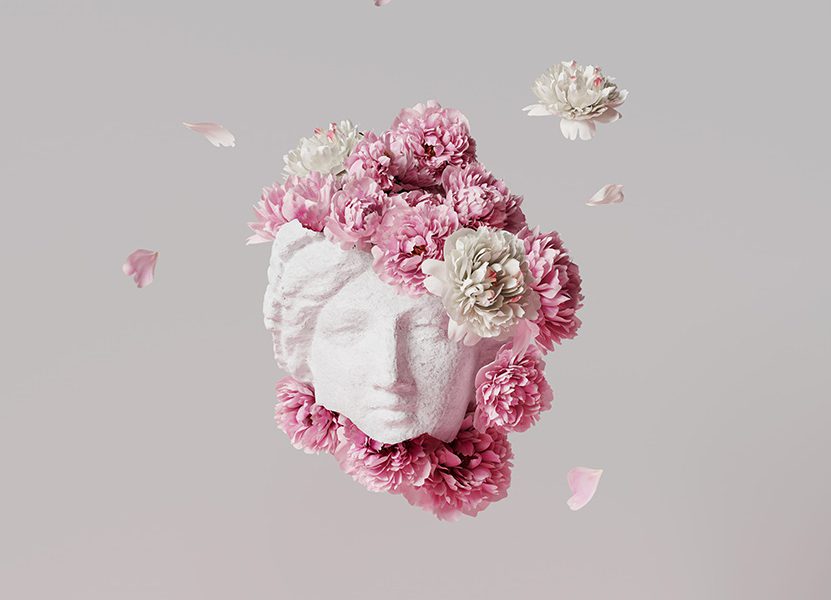See 10 Steps for Migraine Prevention from a Fascinating Specialist
I guess you could call me a wannabe wellness junkie. In fact, whenever I gather with my optometry school friends from around the country, we always have the same conversation: “What supplements are you taking right now? What are you doing for exercise and wellness lately?” But now, my topic would revolve around migraine prevention.
Over the past few years, I’ve noticed an increase in hormonal migraines – and it’s not fun. I’m on a mission to discover ways to naturally reduce my risk of migraines as well as effective remedies to try when they, unfortunately, do occur.
So – since I’m not seeing this lovely group of friends this year (unfortunately!), I’m sharing some of my recent findings and discoveries with you!
We live part of the year in LA, and it is a wellness mecca. There are all kinds of alternative healers and therapists to consult with. Recently I met with a DO (let’s call her Dr. Anne) who specializes in an east-west approach to health and wellness.
Although my reason for seeing her was to find healthy ways to manage hormonal migraines (ugh – yes! perimenopausal), I left with a much better understanding of how I can use eastern medicine techniques preventatively.
Here are some of the things Dr. Anne suggested:
1. Dietary recommendations:
Dr. Anne told me that it’s essential to maintain an anti-inflammatory diet. Some of her specific suggestions are:
EAT – fruits, vegetables, nuts, colorful roots and herbs, omega-3, healthy fats, high fiber whole grains, and turmeric.
*She mentioned that all meals should be colorful. “You should feel like you’re eating a rainbow.” I know this may seem silly, and like you’ve heard it a million times before, but I’d forgotten how helpful that reminder is.
AVOID – sugar, processed carbs, dairy, red meat, refined grains, and saturated fats.
ALSO – eliminate triggers like aged cheese, red wine, and caffeine.
*Okay, easier said than done, but I’m willing to work toward this.
For a more detailed list of dietary and supplement recommendations, see Dr. Aviva Romm’s list here.
2. Sleep as a key component in migraine prevention:
We touched on the importance of quality deep sleep. I told her I have an Oura ring and that it’s been a massive help in sleep accountability. We gave our parents Oura rings for Christmas last year, and they’re addicted to them, too.
3. Exercise as a foundation for wellness:
I know this seems obvious – but hang on! There’s something I wanted to add. A director of the clinic came by and asked me about my exercise regime. I told him that I’m currently doing pilates and riding a Peloton bike at home. He’s a huge fan of the Peloton and said that some of the accompanying stretches and meditations on the Peloton app are the best he’s seen online. So, don’t forget to check them out!
Additional mind/body techniques:
4. Acupressure to manage and prevent discomfort:
Dr. Anne explained the Hegu spot to me. She said it could be beneficial in reducing migraines and headache strain. She suggested that I should experiment with acupressure as it’s something I can easily do any time to help myself through a challenging moment.
Check out tips on acupressure for headaches here:
5. Relaxation for migraine prevention and overall wellbeing:
Dr. Anne specifically mentioned the 4-7-8 breathing technique.
Have you tried it? This breathing technique really works. I can feel myself relax after only two rounds.
6. Meditation as a daily key to wellness:
She reinforced the idea of meditation and told me to try to commit to a daily practice.
7. Acupuncture for migraine prevention:
She asked me if I’d be willing to have treatment right then and there, and I said, “Yes!” She placed 13 pins in various trigger points, left the room, and told me to relax for 20 minutes. I’m a big baby when it comes to needles, but I found the treatment very relaxing, and the time flew by.
8. Craniosacral therapy:
I’ve never tried this – but I am planning to find a practitioner soon. Stay tuned.
9. Qi Gong for wellbeing:
I’m going to try this, too. I’ve never done it. Have you?
10. Trigger Point Injections as a preventative tool:
Her final recommendation was to try trigger point injections. This treatment method was also very new to me, but I was willing to try it.
Dr. Anne injected tiny amounts of medication (I believe a steroid combined with a numbing agent) into various points along my upper back and shoulder muscles. The trigger point injections were not painful – they felt like tiny little pokes. She explained that hormonal headaches might be triggered and significantly worsened by chronic muscular tension.
Fortunately, I can say that the treatment helped! I also learned that I need to try to relax my shoulders and neck more throughout the day.
Overall Summary on migraine prevention and wellbeing with an east/west emphasis:
Dr. Anne helped me see that migraines are more likely to occur when I’m out of balance. Her approach is preventative – which I love. Combining improved nutrition, sleep, and exercise with various alternative treatments can lower the risk of developing periodic migraines. It’s good to know there are so many tools at your fingertips.
**These tips are not medically suitable for everyone. Check with your own doctor for the best medical care for you.
I hope these ideas offer you a fresh perspective.
Let me know if you have any recommendations to add!

Getting started on the right track every morning is also a goal. See my early morning routine here.






Leave a Reply
Want to join the discussion?Feel free to contribute!